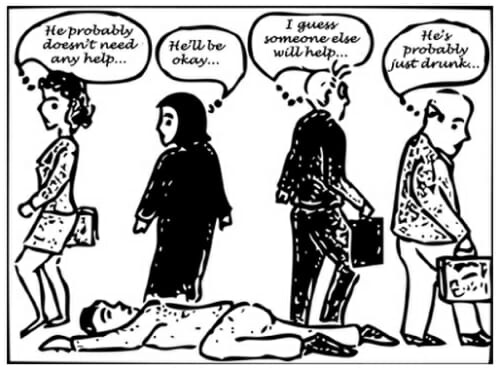Many Voices in A Silent Voice
A Silent Voice is a fantastic piece of storytelling that touches many sensitive topics that many other shows are scared to approach.

Grab a box of tissues because A Silent Voice directed by Naoko Yamada will make you cry, guaranteed. The film has a compelling and touching story, highlighting many sensitive topics in a natural yet powerful way.
The plot follows a boy called Shōyo Ishida from his elementary school days to high school. The main focus is his interaction with a girl called Shōko Nishimiya, who was born with impaired hearing and communicates through Japanese Sign Language (JSL) and writing. Ishida, along with the rest of his class, bullies Nishimiya. They steal and break her hearing aids, exclude her from activities, and more. The things they do to her grow in severity until she is finally forced by her mother to transfer schools.
The story touches the topic of bullying in a natural, organic way by having the kids in the class slowly become more and more impolite over time. The children weren’t mean for the sake of being mean. They befriended Nishimiya at first, helping her in class. But slowly, they began getting more annoyed with her, thinking she’s weird and burdensome. Nishimiya struggles with her self-worth due to her disability and thinks that she did something wrong, thus causing the other students to become increasingly rude to her.
The first major turning point occurs when Nishimiya suddenly stops coming to class. The principal explains that she was losing too many expensive hearing aids and her mother assumed she was getting bullied. The teacher specifically calls out Ishida for the bullying.
Ishida, who was about to admit his own guilt, tries to explain that everyone in the class also helped. However, the other students immediately deny his claims, saying they tried to get him to stop, and one girl even started fake crying. The art and animation also build to the emotion in this scene, conveying an expression of dread and betrayal on Ishida’s face.
In the following years, Ishida finds himself the new victim of the class’s bullying. His desk gets vandalized, his stuff gets thrown in the pond, and his former friends all jeer at him.
At this point in the story, the viewer believes that Ishida got what he deserved. However, the story does not focus on the victim of the bullying. It instead focuses on the bully, in this case, Ishida. This diverts the viewers’ expectations as it would be normal to follow the victim of a bullying situation.
The rest of the narrative follows Ishida’s journey figuring out how to step out of the shadow of his regret. Since he’s lost all of his friends and is constantly treated as an outcast, Ishida develops social anxiety. He has trouble making eye contact, talking to strangers, and being in crowds. He walks with his eyes to the floor and isolates himself all throughout middle and high school. The movie brilliantly represents his disorder by having unnatural looking Xs drawn over all the faces of the people Ishida has trouble making eye contact with.
Ishida tries his best to get in contact with Nishimiya while they attend high school and eventually succeeds. However, his original intention of seeking her out was not an elegant one. Ishida, after living through a constant life of bullying, was planning to commit suicide and wished to talk to Nishimiya one more time to say sorry and die without guilt. He even learned JSL to talk to her. However, his plan was thwarted by his mother. Instead, Ishida slowly develops a friendship, and maybe something even more with Nishimiya in the following weeks. With a push and an olive branch from a fellow classmate, Ishida is able to make other friends and slowly tries to be social again. His climb out of the low point in his life is a slow but beautiful process presented in a realistic and natural manner.
It is at this point that the audience has shifted their perception of Ishida. At first viewers looked at Ishida in a negative way. However, when Ishida begins his transition to being a better person, the audience starts to cheer him on and sees him in a better light. Ishida is clearly improving and the audience expects the rest of the movie will follow the same tone.
It seems perfect for a while until it all comes crashing down again.
Nishimiya tried to vocalize a confession to Ishida at one point, only to run away after realizing he didn’t understand her. This feeling of being a burden slowly being stacking, from the death of her grandmother to Ishida lashing out at all their friends, it eventually becomes too much for her that during a festival one night she tries to jump from her balcony only to be caught by Ishida.
The sign language is accurate and beautiful in animation, and the way Nishimiya talks is representative of her disability. However, she isn’t merely defined by her disability, she isn’t a one-dimensional ‘diversity’ character that one would find in other shows. The audience is invested in her growth and her emotions. She is shown to struggle with strong self-doubt due to seeing the people around her accommodate for her disability and doesn’t want to be a burden. The movie addresses Nishimiya and her family slowly learning the right way to live with her disability and to help her learn to value herself.
The way Ishida develops is also compelling in its own way. His growth doesn’t feel forced or unnatural at any point. The movie is able to shift the audience from being disappointed in him to hating his classmates in a blink of an eye. His decline into depression and social anxiety is logical and doesn’t feel like it comes out of nowhere. The viewer feels the struggle Ishida goes through as he tries to talk with people, make eye contact, and lift his head in crowds. They feel his anger when he lashes out at his new friends but also understands that no one is actually at fault at that moment. It’s because the movie is about teenagers growing up. These characters aren’t rowdy, crazy, and wild all the time. They’re humans, with complex emotional connections struggling through a hard part of life.
A Silent Voice is a fantastic piece of storytelling mastery. It touches many sensitive topics—disabilities, depression, social anxiety—that many other shows are scared to approach. The movie is raw and powerful in its portrayal of real, human emotion. The voices in A Silent Voice are loud, strong, and inspiring.


